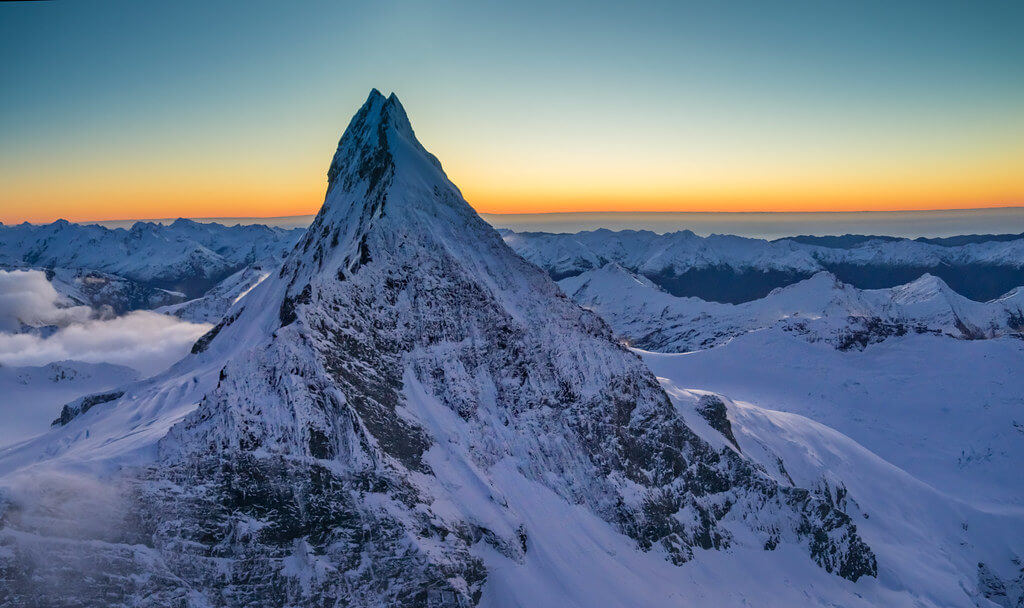A hiker’s paradise exists at Mount Aspiring. Its varied terrain includes over 100 glaciers, magnificent alpine lakes, formidable mountains, gushing waterfalls, and deep forests. Mount Aspiring is located in Mount Aspiring National Park, one of the most visited national parks in New Zealand. So, this is a complete guide to visiting Mt Aspiring and the national park here.
Mount Aspiring: One of the South Island’s most popular tourist attractions
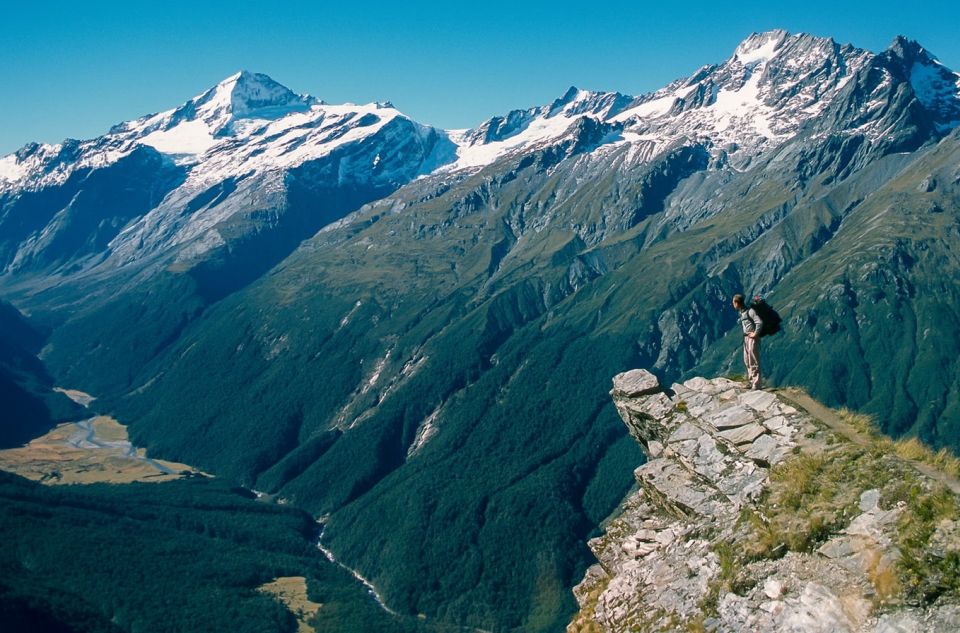
Mount Aspiring is a peak in New Zealand’s South Island’s Western Alps. It is a tiny glacier formed by the Bonar, Volta, Therma, and Iso glaciers that climbs to a pyramid-shaped peak. Its four ridges rise to 9,932 feet (3,027 m), and the western slopes are covered in dense rainforests.
Besides, the summit was first climbed in 1909 by Major Bernard Head after being discovered and named in 1857 by the explorer-surveyor John Turnbull Thomson. It became the focal point of Mount Aspiring National Park, established in 1964, and spanned 1,109 square miles (2,872 square kilometers) from Haast Pass to Fiordland National Park.
History of Mt Aspiring, Wanaka
The first people here were Maori, who was looking for food and pounamu (greenstone). The “greenstone trails” along mountain passes, including Haast Pass on State Highway 6 (the main road connecting Wānaka and Haast), are still in use today.
Mount Aspiring was known as Tititea by the Maori, meaning a steep sparkling white peak. They traveled to the inland lakes all year long from Foveaux Strait and Coastal Otago to gather kakapo, kaka, kereru (wood pigeon), and tui from the forest. Additionally, there would have been moa near the boundaries of the forests for the first 200 years of Maori settlement.
Settlements near the shores of Lakes Wānaka and Hawea, particularly Nehenehe (literally, “forest”) on the north side of the Matukituki River mouth, were given names by both Kati Mamoe and Kai Tahu. On several lakeshore locations, ovens are used to prepare ti rakau (cabbage tree) roots.
John Turnbull Thompson, a government surveyor, was the first European to observe Mount Aspiring/Tititea in 1857. Many valleys were farmed and mined for minerals like scheelite after European arrival. There are still traces of these activities in and around the park. In the late 1880s, tourism development got underway. Even back then, it was still feasible to go on a tour of the Routeburn Valley.
Mount Aspiring National Park: UNESCO World Heritage Sites in New Zealand
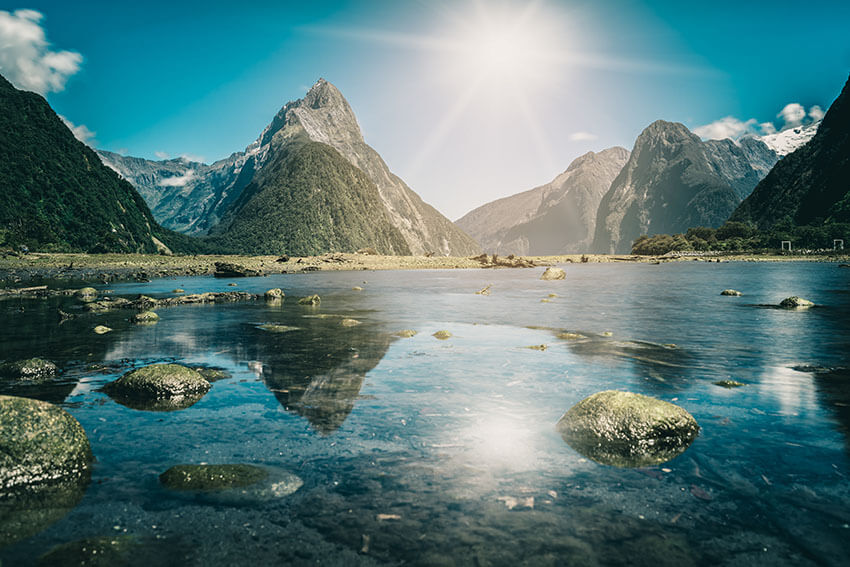
The establishment of Mt Aspiring National Park in 1964 made it the tenth national park in New Zealand. In the Te Wahipounamu region of New Zealand, Mount Aspiring and three other national parks were designated as UNESCO World Heritage Sites in 1990 (South West New Zealand).
The park, one of the most well-liked tourist destinations on the South Island, is named for its tallest summit, Mt. Aspiring.
The park is adjacent to Wanaka and Glenorchy and occupies a sizable chunk of the Southern Alps. Its 3,562 square kilometers are all land (1,375 sq mi). Exploring the park is simple due to its proximity to Glenorchy and Wanaka.
As you’ll see, a large portion of this list emphasizes the stunning walks that Mount Aspiring National Park is known for. Having said that, the park also features several additional attractions, including one of New Zealand’s most well-known canyoning excursions. It’s reasonable to say that Mount Aspiring National Park is a haven for adventurers with wide-open spaces begging to be discovered.
Do you know Castle Hill Rocks: Explore The National Treasure Of New Zealand
Things to do in Mt Aspiring National Park, Wanaka
Check out the Blue Pools
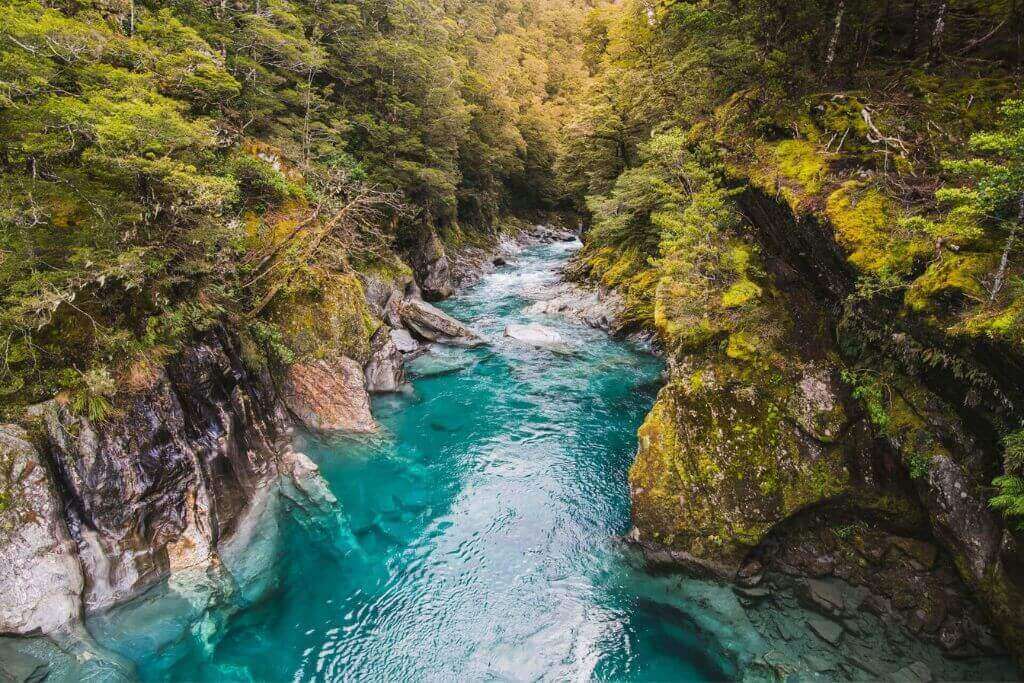
One of the most well-liked destinations on the Wanaka to Franz Josef route is only a one-hour drive from Wanaka. The Blue Pools are renowned for their amazing blue hue and breathtaking surroundings. A short, straightforward trek leads to the Makarora and Blue Rivers on the journey to the blue waters. You will cross two swing bridges during the stroll. The second will provide you with a spectacular perspective of the clear, blue water below.
The Blue Pools are unquestionably one of the most well-liked attractions in Mount Aspiring National Park and a must-see on any trip along the West Coast. One of the greatest things to do on the South Island, in the opinion of many, is to visit the Blue Pools.
Wander to Brewster Hut
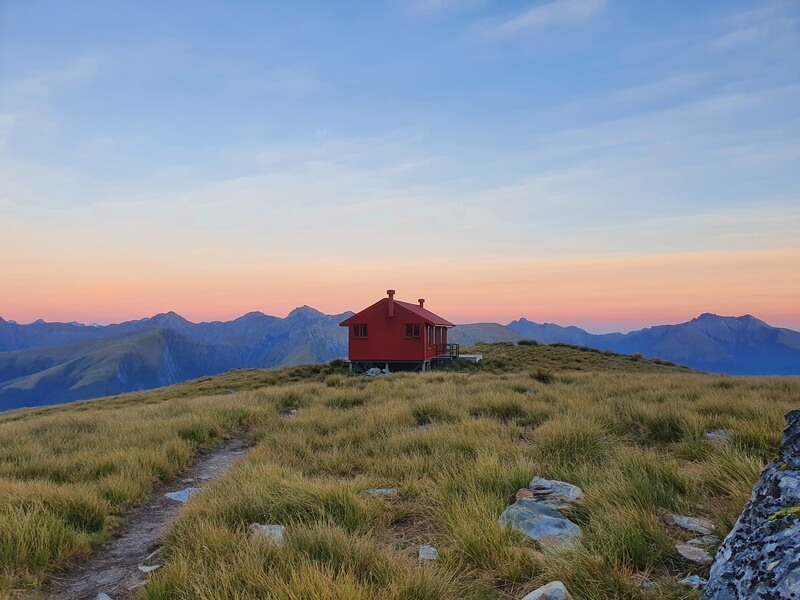
This quick trip begins near Fantail Falls on the West Coast, climbs 1,000 meters (3,280 feet) in height over a short distance, and takes around three hours each way. It’s slippery after it rains and steep!
But you get something for your effort! You’ll get breathtaking views of New Zealand’s West Coast and the Southern Alps once you get to the Brewster Hut. The Milky Way may be seen with the unaided eye on a clear night, and the stars are magnificent.
Admire Thunder Creek Falls in wonder
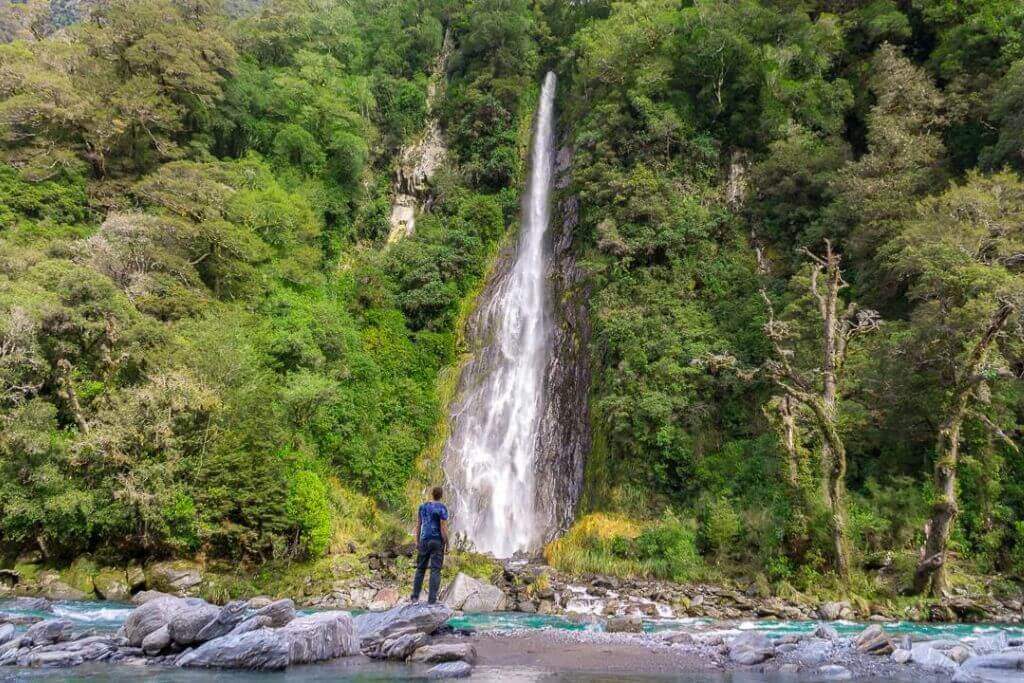
Thunder Creek Falls, a well-known destination on the West Coast in Mount Aspiring National Park, is certainly tall at 28 meters (92 feet.) It takes just five minutes from the parking area to reach this gorgeous waterfall’s perspective. It certainly provides for a stunning image, surrounded by native flora and with the Haast River’s azure waters flowing below!
Routeburn Track Hike
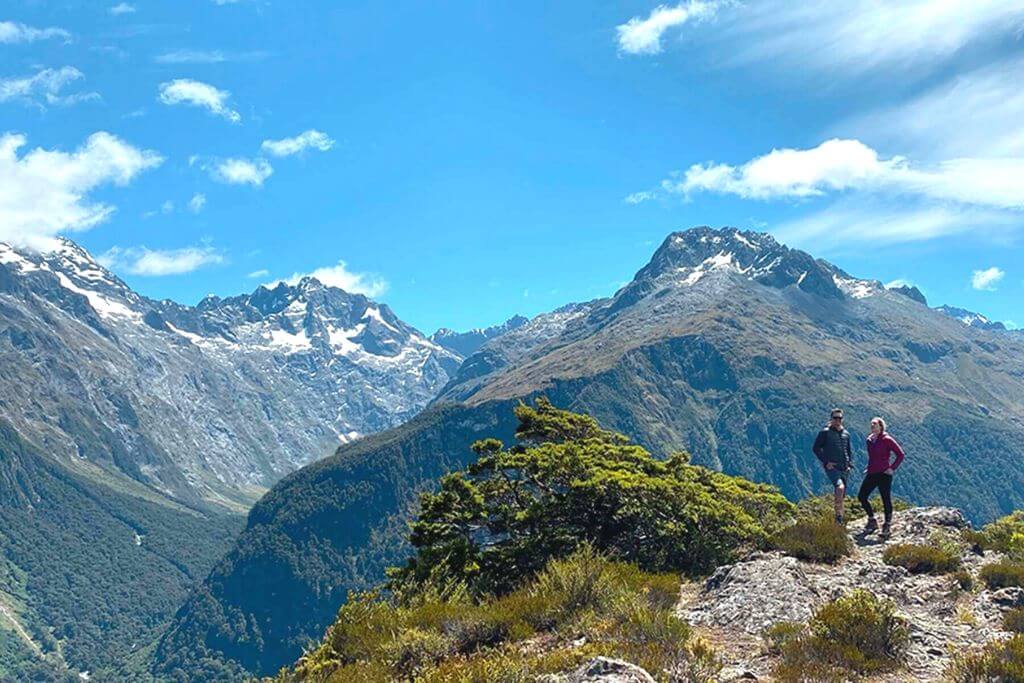
The Routeburn Track, one of New Zealand’s 10 Great Walks, begins outside Glenorchy. This 32-kilometer (20-mile) trail ends on the road connecting Te Anau and Milford Sound after passing through the Southern Alps. One of the nicest walks in Glenorchy. It is spectacular.
You can easily hike portions of the Routeburn Track in a day, even if completing the entire track requires a lot of planning (as well as reservations in advance). Less than 10 kilometers roundtrip separate some of the shortest day hike alternatives that take you past a moss-covered woodland, up the Dart River, and to a breathtaking waterfall.
Related post Lake Hawea, New Zealand: Outdoor Adventurers’ Paradise
Use a jet boat
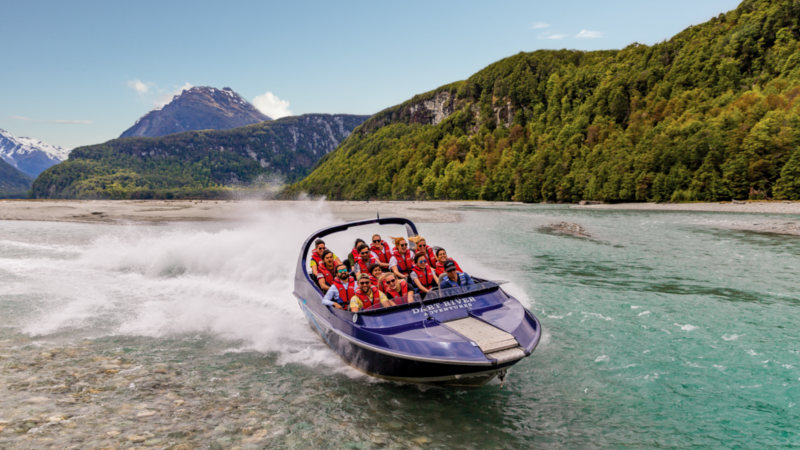
Jet boating is a highly well-liked activity in Mount Aspiring National Park that will make your heart race. One of the best things to do in Wanaka is to take a boat tour from Wanaka through the rivers of Mount Aspiring National Park, including the Matukituki, Wilkin, and Makarora rivers.
The Wanaka Jet boat excursion leaves from the lakeside of Wanaka and transports you across the lake while allowing you to take in the landscape and into the Clutha River (the longest river in New Zealand). Your driver will really test the boat’s capabilities at the Clutha River by making 180- and 360-degree maneuvers.
Find a cunning Kea bird
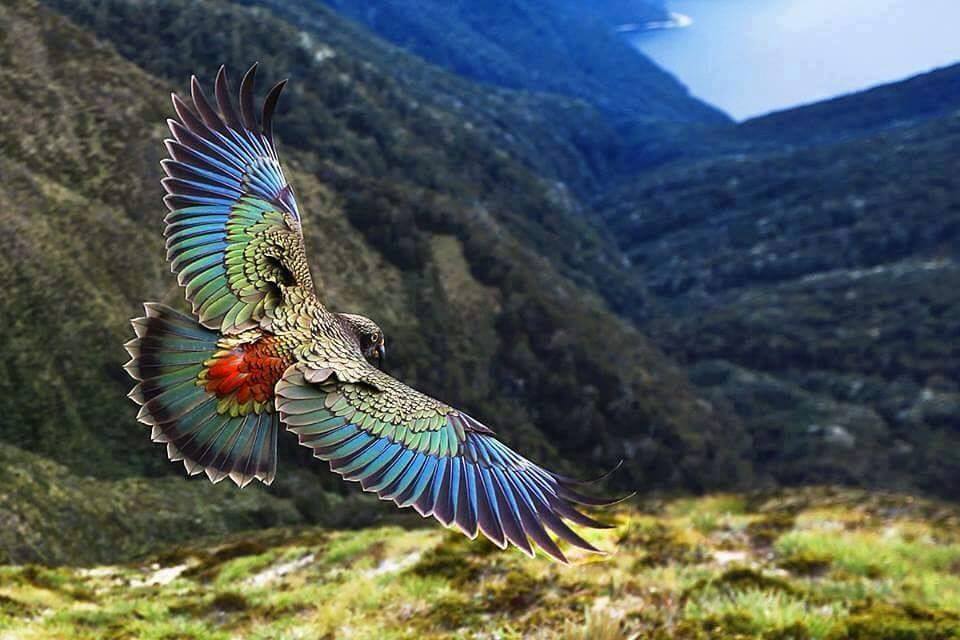
Only in New Zealand can you find keas, an alpine parrot. These well-known birds are adorable, inquisitive, and downright cheeky! Seriously, they’ll steal your keys or break into your luggage!
Because there were no predators in New Zealand for thousands of years, keas are not as terrified of people as you might assume. These stunning parrots can be spotted when trekking in Mount Aspiring National Park since they dwell high in the mountains.
Take a picture of them in flight if you can. Their underwing hues are gorgeous! When hiking in the mountains, just make sure to keep your belongings zipped and never leave your bag alone since they’ll fly down and break in! It should go without saying but kindly refrain from feeding or handling the birds.
Adventure Canyoning on Mount Aspiring
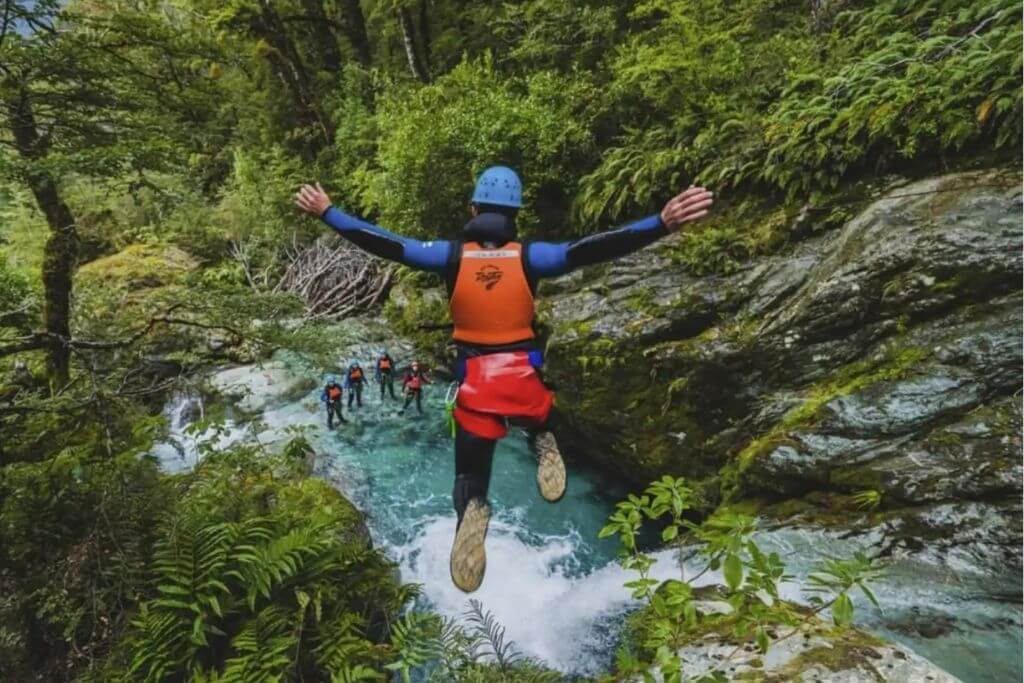
For those who are new, canyoning entails swimming, sliding, climbing, and rappelling through a canyon. It’s undoubtedly an experience for the daring, but I adore it and have done it all around the world!
After a brief hike to the canyon at the start of this canyoning excursion in Wanaka, you’ll need to abseil, climb, swim, and struggle your way through the breathtaking but challenging canyon. Maybe even try a couple of cliff jumps. Bring a waterproof camera with you so you can shoot lots of pictures!
Take a scenic flight to see the entire landscape in Mount Aspiring
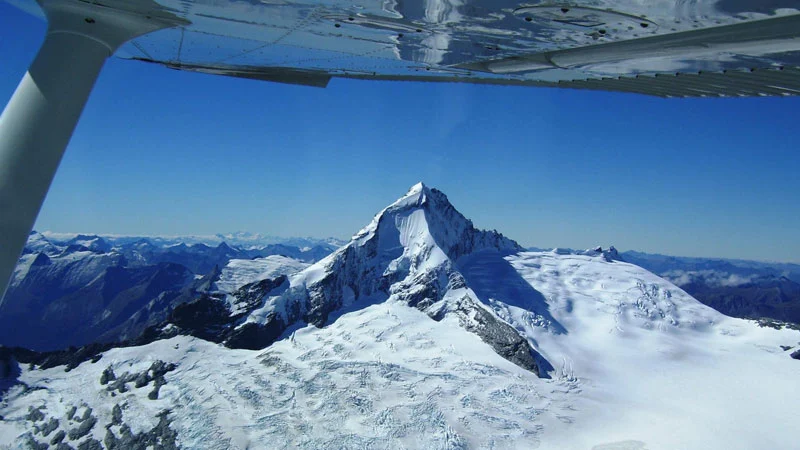
When it comes to picking a scenic flight, there are two possibilities. The first option, which involves flying in a small single-engine aircraft, offers the best value. These flights cost about $300 in New Zealand Dollars! Choose this tour instead, which includes the flight, a self-guided hike, and jet boating for a more distinctive experience.
The second is that you depart from the Matukituki Valley to visit Mount Aspiring National Park as part of the itinerary. You’ll see Mt. Aspiring up and personal during the trip, and you’ll also experience two alpine landings to catch some fresh mountain air. A trip like this is not inexpensive; each individual must pay $580 NZD for it.
Getting to Mount Aspiring
Drive the 42 miles (one hour) to Wanaka from Queenstown International Airport or go overland from the northwest (through the Haast Pass and West Coast) or east to get there (via Christchurch or Dunedin). Most trailheads for short hikes and larger treks are up to an hour’s drive from Wanaka.
Frequently, Makarora, a town on the northern bank of Lake Wanaka (Wanaka is on the southern), is mentioned as the beginning point. Makarora is a little more than an hour’s drive from Wanaka. To get to some walks, it might be necessary to drive down gravel roads. Before leaving, check the local weather, especially if there has been a lot of rain, as mud or flooding may damage rural routes.
You can plan transportation from Wanaka or Te Anau if you’re starting a multi-day hike or one that starts and ends in separate locations. In terms of safety, this is also a smart idea because, despite New Zealand’s reputation for safety, car break-ins and thefts at isolated trailheads are known issues.
Read more Visit Purakaunui Falls: New Zealand’s Most Photographed Waterfall
Tips for visiting
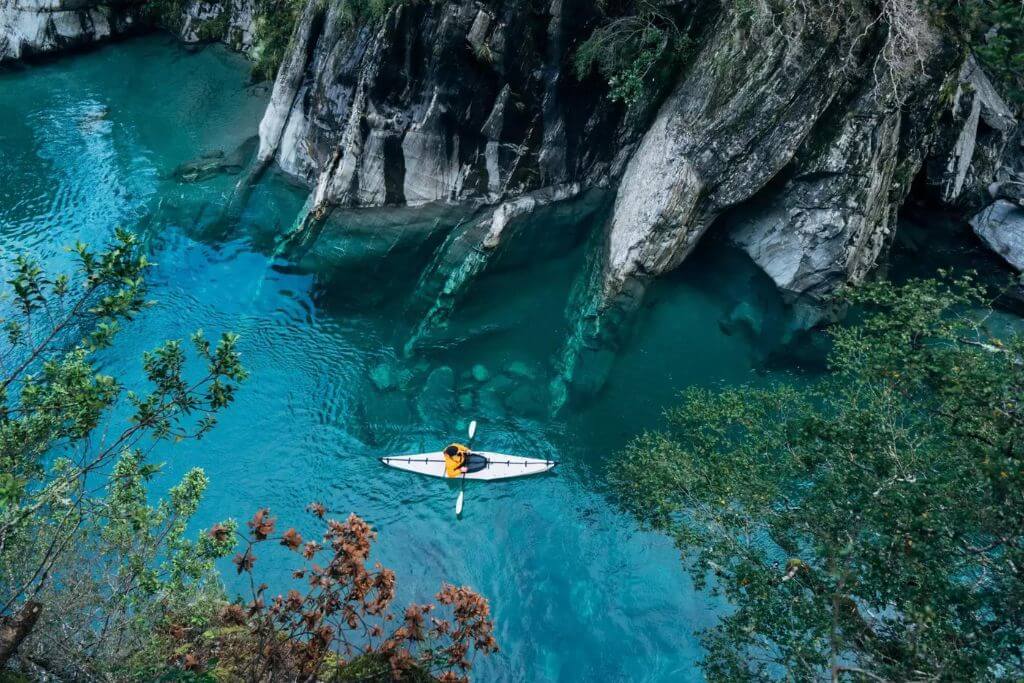
- Most treks are best done between November and March because the park is elevated.
- Kea, cheeky mountain parrots that occasionally show an unhealthy interest in tourists’ backpacks and tents are common in alpine regions.
- A Department of Conservation Visitors’ Center should always be consulted before beginning one of the longer walks.
- Pack for every possible weather scenario because the park’s seasonal transition from summer to winter can happen quickly.
- Only the Matukituki Valley can be walked in safety during the entire year.
- For experienced trampers, the Cascade Saddle Route is appropriate in the summer.
Here is everything you need to know before exploring Mount Aspiring. So, come here immediately to begin your fantastic journey! Please share your thoughts by posting a comment below!
